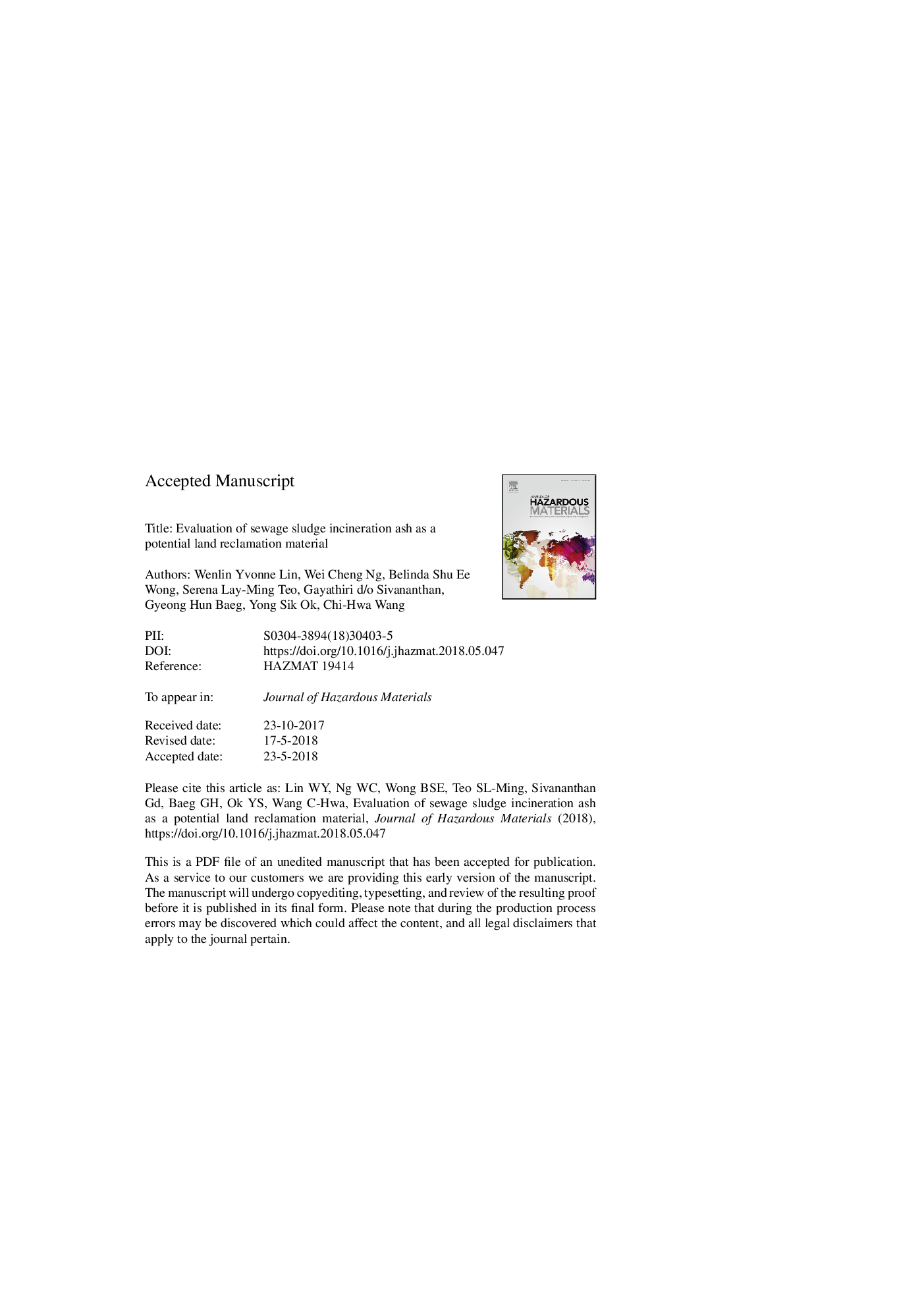| Article ID | Journal | Published Year | Pages | File Type |
|---|---|---|---|---|
| 6968015 | Journal of Hazardous Materials | 2018 | 38 Pages |
Abstract
This study evaluated the potential of utilising sewage sludge incineration ash as a land reclamation material. Toxicity assessment of the leachate of the ash was carried out for both terrestrial and marine organisms. Both the fruit fly Drosophila melanogaster and barnacle Amphibalanus amphitrite showed that both bottom and fly ash leached at liquid-to-solid (L/S) ratio 5 did not substantially affect viabilities. The leachate carried out at L/S 10 was compared to the European Waste Acceptance Criteria and the sewage sludge ashes could be classified as non-hazardous waste. The geotechnical properties of the sewage sludge ash were studied and compared to sand, a conventional land reclamation material, for further evaluation of its potential as a land reclamation material. It was found from direct shear test that both bottom and fly ashes displayed similar and comparable shear strength to that of typical compacted sandy soil based on the range of internal friction angle obtained. However, the consolidation profile of bottom ash was significantly different from sand, while that of fly ash was more similar to sand. Our study showed that the sewage sludge ash has the potential to be used as a land reclamation material.
Related Topics
Physical Sciences and Engineering
Chemical Engineering
Chemical Health and Safety
Authors
Wenlin Yvonne Lin, Wei Cheng Ng, Belinda Shu Ee Wong, Serena Lay-Ming Teo, Gayathiri d/o Sivananthan, Gyeong Hun Baeg, Yong Sik Ok, Chi-Hwa Wang,
